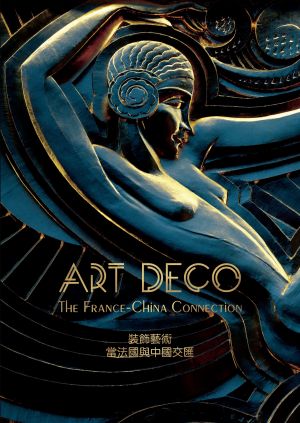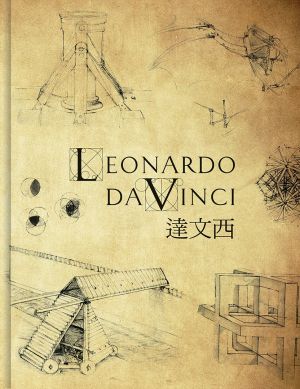Art Machines 藝術機器
HKD250.00
In stock
The history of artmaking and the history of tools and technology are inextricably linked because technology makes possible what can be artistically expressed. If there is one idea that the visitor should take away from Art Machines, it is that technology is not an impediment to the making of art but a condition of its possibility. Indeed, the history of modern art is the history of the collaboration between artists and engineers. The proliferation of new technologies, above all the computer, has afforded an ever-widening repertoire of material and symbolic forms from which art can be created. What makes something a work of art is not that it is handmade or machine-made, but the maker’s intentions that inform its creation. An artwork’s value lies in the success and coherence with which these intentions are communicated through the materials, bestowing upon the work its unique value.
藝術創作的歷史以及藝術工具和材料的歷史,兩者之間有著千絲萬縷的聯繫,因為科技為藝術表達帶來了更多可能性。而我期望通過本次展覽「藝術機器」向你闡明:科技並非藝術創作的絆腳石,而是成就其誕生的條件。誠然,現代藝術的歷史正是藝術家與工程師攜手協作的歷史。電腦等新科技的廣泛普及,為藝術創作提供了愈發豐富的物料和符號形式。藝術品之所以為藝術品,不在於是人手抑或機器製作,而是創作背後的意圖。如果這些意圖能透過製作物料成功地傳達出來,以及賦予作品獨特的意義,兩者之間能成功地貫徹始終,便是作品的價值所在。
藝術創作的歷史以及藝術工具和材料的歷史,兩者之間有著千絲萬縷的聯繫,因為科技為藝術表達帶來了更多可能性。而我期望通過本次展覽「藝術機器」向你闡明:科技並非藝術創作的絆腳石,而是成就其誕生的條件。誠然,現代藝術的歷史正是藝術家與工程師攜手協作的歷史。電腦等新科技的廣泛普及,為藝術創作提供了愈發豐富的物料和符號形式。藝術品之所以為藝術品,不在於是人手抑或機器製作,而是創作背後的意圖。如果這些意圖能透過製作物料成功地傳達出來,以及賦予作品獨特的意義,兩者之間能成功地貫徹始終,便是作品的價值所在。
ISBN
978-962-442-446-1
Pub. Date
Dec 20, 2020
Weight
0.8kg
Paperback
173 pages
Dimension
210 x
260 mm
Subjects
When we see a creature using a stone to break open a nut, we witness an ur operation that adumbrates the entire gamut of technical prosthesis and augmentations that are the hallmark of human ingenuity. The history of art making is on the one hand a history of iconography and representation (of signs) and, on the other hand, a history of maker tools and materials (of technology). These two are inextricably linked, because the maker technologies both constrain and liberate the scope (the texture) of what can be expressed. Furthermore, the voracity of the expressive desire continuously provokes the 'invention' of new technologies ranging from new painting and sculpting materials to photography, cinematography and today's digitality.
Thinking about 'machine art' one can position certain differences in the ways in which machines have been instrumentalized:
· The artists who use existing machines to help them create their artworks. In this case these machines remain in the background. The Renaissance painters' use of the camera obscura is an example, while a contemporary sculptor may utilize scanners and 30 printing.
· The artists who construct/invent machines to help them create their artworks, which can be either hardware or software machines (or both). Again, while these machines stay in the background, they are very important as they have been conceived and crafted to achieve specific artistic goals. The custom hardware/software apparatus that Larry Cuba built to make 3/78 (Objects and Transformations), 1978, is such a case (fig. 85).
· The artist who integrates machines as part (or the entirety) of the actual expression of the artwork. Here the operational properties of various machines are given aesthetic, conceptual and often ludic status. The works of Jean Tinguely (figs. 24, 25) and Rebecca Horn are of course superb examples.
· The artist whose work is inspired by, or expresses, an aspect of the machine. Here it is not an actual machine that is involved in the creation of the work but the idea of a machine, as in the works of so many modern artists (e.g. Frantisek Kupka, Fernand Leger) in the early part of the 20th century.
Our engagement with the world is fundamentally sensual. We are embodied because we feel, touch, see, hear and smell our surroundings, and within this sensorium emerges the universal narratives of selfawareness, reflection (and fragility). Humans have from the beginning nurtured and expanded rich modalities of sensual expression in music, dance, theater, art, craft, etc. This is often achieved by means of the construction of machinic augmentation and prosthesis, ranging from the sounds created by musical instruments to the forms created by computational algorithms.
In curating this exhibition, Richard Allen and I set out to celebrate the heterogeneous and fecund conjunction of machines and artistic expression that is being so adroitly practiced by artists who are faculty members of the City University of Hong Kong (CityU) School of Creative Media (SCM), as well as other like-minded artists from the broader Hong Kong community. In this catalogue, Allen elucidates the extraordinary scope of technical and aesthetic experimentation that is being undertaken by these artists, and also positions them in the global, interdisciplinary history of art and technology to which they are making such meaningful contributions. In this way, the exhibition sets out to gauge the gamut of 'art machine' practices today, and to suggest the direction in which art is going as the technologies that will leaven art's future continue to proliferate.
Jeffrey Shaw
當我們看到一個生物以石頭砸開堅果時,我們目睹了一次原始操作,預示了技術假體與增強的整個領域,也是人類獨創性的標誌。藝術創作的歷史一方面是肖像和表象的(符號的)歷史,另一方面是藝術工具和材料(技術的)的歷史。這兩者之間有著千絲萬縷的聯繫,因為製造的技術既約束又解放了可表達內容的範圍(紋理)。此外,表達慾望的貪婪不斷激起了新技術的「發明」,從新的繪畫和雕刻材料到攝影、電影藝術以至當今的數碼性。
想到「機器藝術」,我們可以找出機器不同的工具化的方式:
● 使用現有機器幫助他們創造作品的藝術家。在這種情況下,這些機器停留於背景中不顯眼的位置。文藝復興時期的畫家使用暗箱就是一個例子,當代的雕刻家則會使用掃描儀和3D打印。
● 建造/發明機器以幫助他們創造作品的藝術家,那可以是機器硬件或軟件(或兩者)。同樣,這些機器處於背景中不顯眼的位置,但它們非常重要,因為它們是為實現特定的藝術目標而被構思和製作的。Larry Cuba製造的用於製作《3/78 (Objects and Transformations) 》的定制硬件/軟件設備就屬此例(圖 83)。
● 將機器融入藝術作品實際表達的一部分(或全部)的藝術家。在這個情況裡,各種機器的操作特性都被賦予了美學的、觀念性和幽默的狀態。尚·丁格利(Jean Tinguely)(圖24, 25)和雷貝嘉.霍恩(Rebecca Horn)的作品便是極好的例子。
● 作品的靈感來自或表達了機器的某些方面的藝術家。在這裡,參與作品的創作的並非真正的機器,而是機器的概念,就像二十世紀初的許多現代藝術家(如弗朗齊歇克·庫普卡(František Kupka)、費爾南·雷捷(Fernand Leger))的作品。
我們與世界的互動從根本上是感性的。我們之所以有身體, 是因為我們感覺、觸摸、看到、聽到、嚐到和嗅到我們周圍的事物,並且從這個感覺中樞中出現了自我意識、反思(和脆弱)的普世敘事。打一開始,人類就已經從音樂、舞蹈、戲劇、藝術、手工藝等培育並擴展了豐富的感官表達形式。這通常是透過構造機械的增強和義肢來實現,包括樂器產生的聲音到演算法創建的形式。
藉著策劃是次展覽,我和艾朗宏著手慶祝機器與藝術表現形式異質豐饒的融合,它們為藝術家們如此巧妙地實踐,當中包括香港城市大學創意媒體學院的成員,以及其他本地志同道合的藝術家們。在此目錄中,艾朗宏闡明了這些藝術家們正在進行的技術與美學實驗的超凡領域,並將他們置於他們正為之作出如此有意義貢獻的全球藝術和技術跨學科歷史之中。通過這種方式,展覽展開了對當今「藝術機器」實踐領域的測量,並提出了在推動藝術發展的技術不斷增生的同時,藝術的未來走向。
邵志飛
Thinking about 'machine art' one can position certain differences in the ways in which machines have been instrumentalized:
· The artists who use existing machines to help them create their artworks. In this case these machines remain in the background. The Renaissance painters' use of the camera obscura is an example, while a contemporary sculptor may utilize scanners and 30 printing.
· The artists who construct/invent machines to help them create their artworks, which can be either hardware or software machines (or both). Again, while these machines stay in the background, they are very important as they have been conceived and crafted to achieve specific artistic goals. The custom hardware/software apparatus that Larry Cuba built to make 3/78 (Objects and Transformations), 1978, is such a case (fig. 85).
· The artist who integrates machines as part (or the entirety) of the actual expression of the artwork. Here the operational properties of various machines are given aesthetic, conceptual and often ludic status. The works of Jean Tinguely (figs. 24, 25) and Rebecca Horn are of course superb examples.
· The artist whose work is inspired by, or expresses, an aspect of the machine. Here it is not an actual machine that is involved in the creation of the work but the idea of a machine, as in the works of so many modern artists (e.g. Frantisek Kupka, Fernand Leger) in the early part of the 20th century.
Our engagement with the world is fundamentally sensual. We are embodied because we feel, touch, see, hear and smell our surroundings, and within this sensorium emerges the universal narratives of selfawareness, reflection (and fragility). Humans have from the beginning nurtured and expanded rich modalities of sensual expression in music, dance, theater, art, craft, etc. This is often achieved by means of the construction of machinic augmentation and prosthesis, ranging from the sounds created by musical instruments to the forms created by computational algorithms.
In curating this exhibition, Richard Allen and I set out to celebrate the heterogeneous and fecund conjunction of machines and artistic expression that is being so adroitly practiced by artists who are faculty members of the City University of Hong Kong (CityU) School of Creative Media (SCM), as well as other like-minded artists from the broader Hong Kong community. In this catalogue, Allen elucidates the extraordinary scope of technical and aesthetic experimentation that is being undertaken by these artists, and also positions them in the global, interdisciplinary history of art and technology to which they are making such meaningful contributions. In this way, the exhibition sets out to gauge the gamut of 'art machine' practices today, and to suggest the direction in which art is going as the technologies that will leaven art's future continue to proliferate.
Jeffrey Shaw
當我們看到一個生物以石頭砸開堅果時,我們目睹了一次原始操作,預示了技術假體與增強的整個領域,也是人類獨創性的標誌。藝術創作的歷史一方面是肖像和表象的(符號的)歷史,另一方面是藝術工具和材料(技術的)的歷史。這兩者之間有著千絲萬縷的聯繫,因為製造的技術既約束又解放了可表達內容的範圍(紋理)。此外,表達慾望的貪婪不斷激起了新技術的「發明」,從新的繪畫和雕刻材料到攝影、電影藝術以至當今的數碼性。
想到「機器藝術」,我們可以找出機器不同的工具化的方式:
● 使用現有機器幫助他們創造作品的藝術家。在這種情況下,這些機器停留於背景中不顯眼的位置。文藝復興時期的畫家使用暗箱就是一個例子,當代的雕刻家則會使用掃描儀和3D打印。
● 建造/發明機器以幫助他們創造作品的藝術家,那可以是機器硬件或軟件(或兩者)。同樣,這些機器處於背景中不顯眼的位置,但它們非常重要,因為它們是為實現特定的藝術目標而被構思和製作的。Larry Cuba製造的用於製作《3/78 (Objects and Transformations) 》的定制硬件/軟件設備就屬此例(圖 83)。
● 將機器融入藝術作品實際表達的一部分(或全部)的藝術家。在這個情況裡,各種機器的操作特性都被賦予了美學的、觀念性和幽默的狀態。尚·丁格利(Jean Tinguely)(圖24, 25)和雷貝嘉.霍恩(Rebecca Horn)的作品便是極好的例子。
● 作品的靈感來自或表達了機器的某些方面的藝術家。在這裡,參與作品的創作的並非真正的機器,而是機器的概念,就像二十世紀初的許多現代藝術家(如弗朗齊歇克·庫普卡(František Kupka)、費爾南·雷捷(Fernand Leger))的作品。
我們與世界的互動從根本上是感性的。我們之所以有身體, 是因為我們感覺、觸摸、看到、聽到、嚐到和嗅到我們周圍的事物,並且從這個感覺中樞中出現了自我意識、反思(和脆弱)的普世敘事。打一開始,人類就已經從音樂、舞蹈、戲劇、藝術、手工藝等培育並擴展了豐富的感官表達形式。這通常是透過構造機械的增強和義肢來實現,包括樂器產生的聲音到演算法創建的形式。
藉著策劃是次展覽,我和艾朗宏著手慶祝機器與藝術表現形式異質豐饒的融合,它們為藝術家們如此巧妙地實踐,當中包括香港城市大學創意媒體學院的成員,以及其他本地志同道合的藝術家們。在此目錄中,艾朗宏闡明了這些藝術家們正在進行的技術與美學實驗的超凡領域,並將他們置於他們正為之作出如此有意義貢獻的全球藝術和技術跨學科歷史之中。通過這種方式,展覽展開了對當今「藝術機器」實踐領域的測量,並提出了在推動藝術發展的技術不斷增生的同時,藝術的未來走向。
邵志飛




